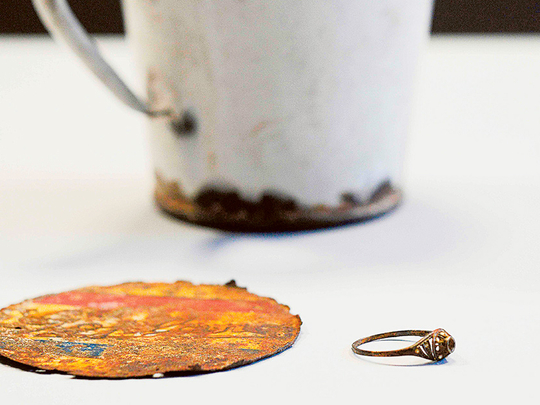
Oswiecim, Poland: A gold ring and necklace hidden by an Auschwitz prisoner in a false-bottomed mug for fear of looting by German Nazis has been discovered at site of the death camp, the Auschwitz museum said on Thursday.
More than 70 years after the liberation of the Second World War camp in occupied Poland, staff discovered the jewellery in a rusting enamel mug, one of thousands of pieces of kitchenware now on display at the museum.
“Such discoveries do take place but this one is unique because of how the jewellery was hidden,” museum spokesman Pawel Sawicki said.
“We haven’t checked all the thousands of [pieces of] kitchenware ... but we managed to find the valuables because the material was slowly degrading and the false bottom separated itself from the original mug.”
The necklace was found wrapped in a scrap of canvas along with the women’s ring.
Sawicki said it was impossible to identify the owner other than it was “someone who believed in the lie told by the German Nazis when they were deporting people to Auschwitz”.
Many inmates brought along their valuables to Auschwitz because the Nazis promised them resettlement and new lives, but the personal items of arriving prisoners were then plundered before they were sent to their deaths.
“We can see the fear of the person because they hid the jewellery. It means that they knew about the robbery,” Sawicki said. “But in a way we also see the hope that the person had [for their survival].”
Over years, museum staff have found a wide assortment of items, from “a tiny button, a fork, cutlery, pieces of glass, bottles”, he said.
One million European Jews died between 1940 and 1945 at the Auschwitz camp in the southern city of Oswiecim.
More than 100,000 other people including non-Jewish Poles, Roma, Soviet prisoners of war and anti-Nazi resistance fighters also died there, according to the museum.
A record 1.72 million people visited the site in 2015, the 70th anniversary of the liberation of the camp by the Soviets.












